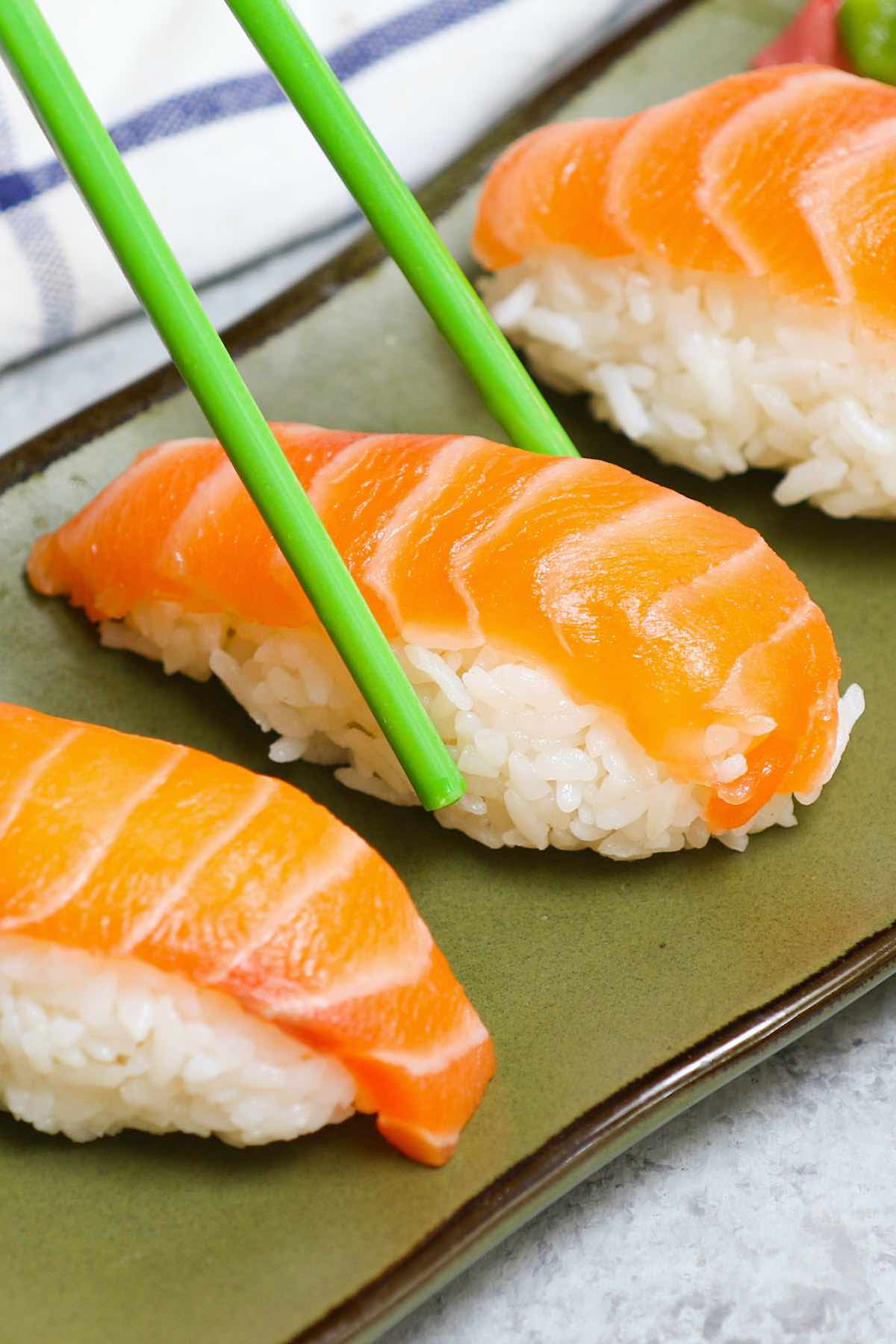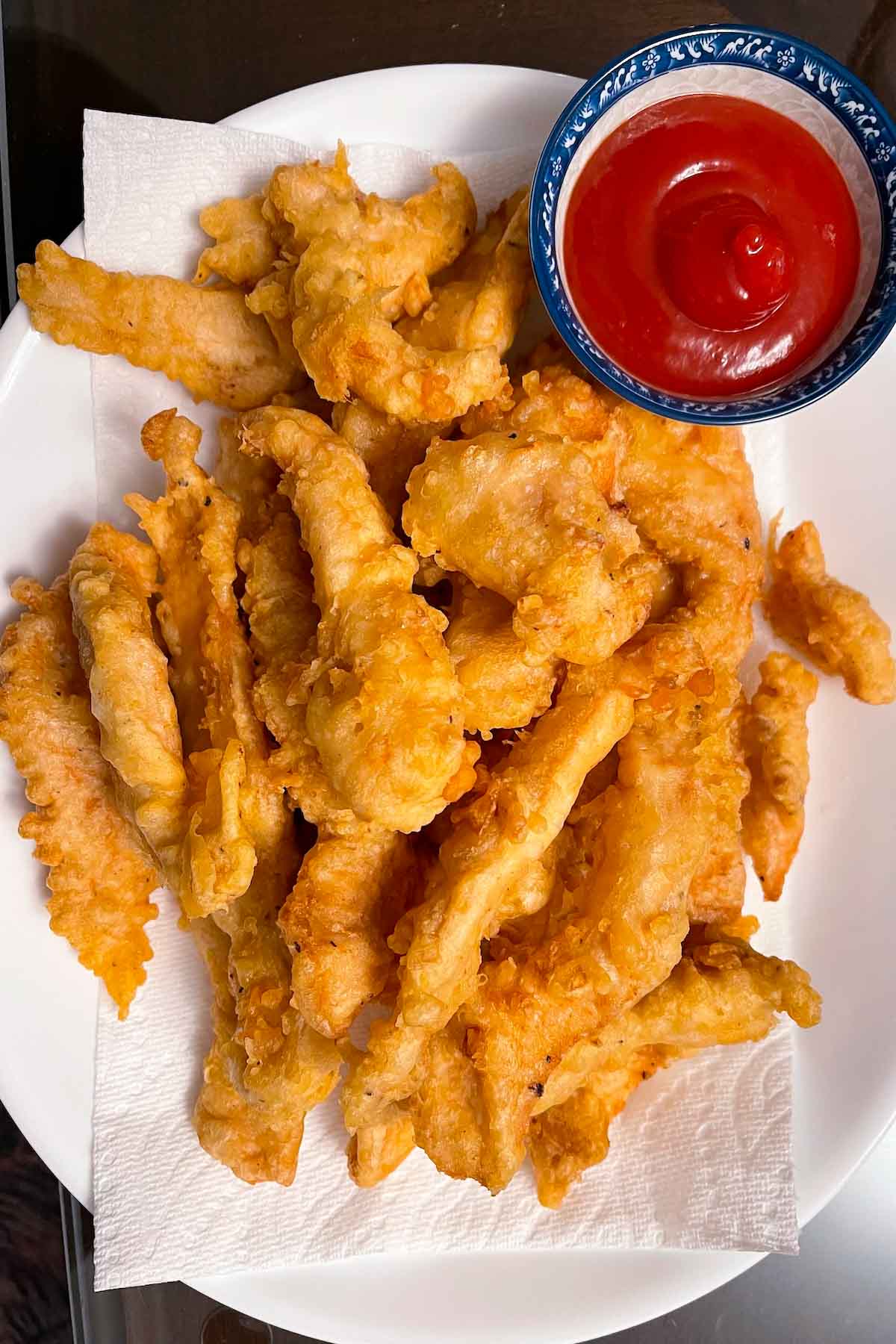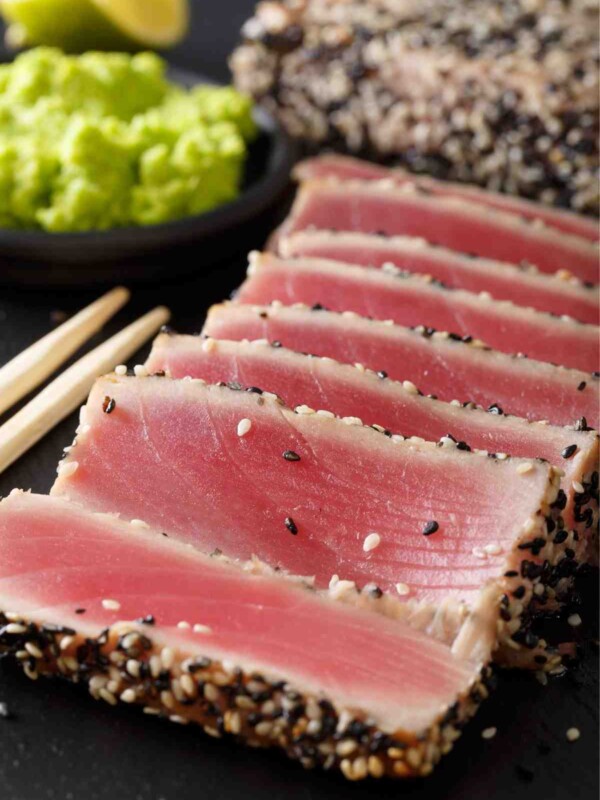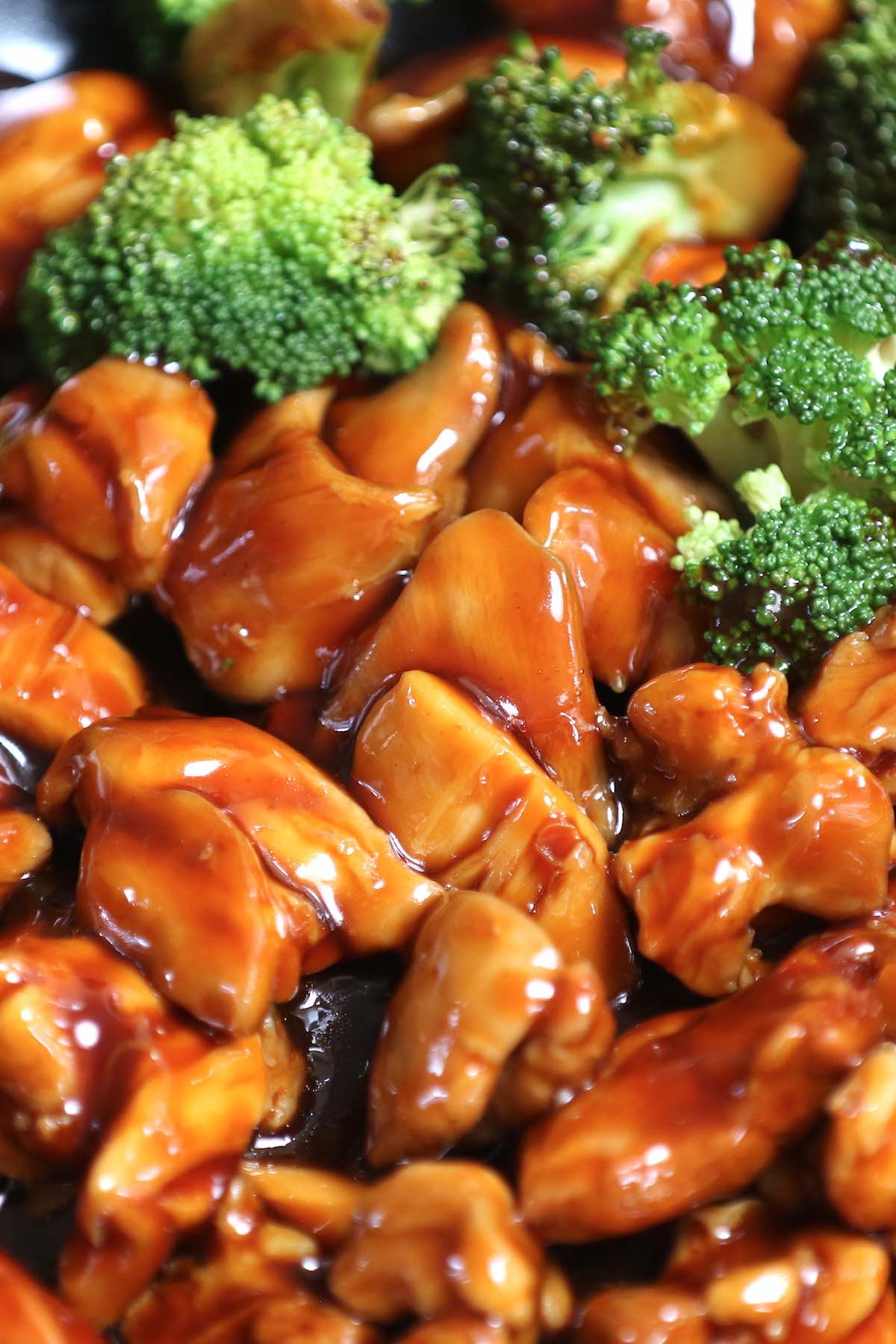Harumaki (Japanese Spring Roll Recipe)
on Feb 19, 2021, Updated Nov 19, 2023
This post may contain affiliate links. Please read my disclosure policy.
Harumaki is Japanese spring rolls that are crispy on the outside and soft, flavorful on the inside. You’ll be surprised how easy it is to make these Harumaki rolls. Fill the wrappers with your choice of vegetables, pork, chicken, or shrimp, and deep-fry until golden brown. I like to serve them with sweet and sour sauce for dipping, perfect for a light lunch, dinner, or appetizer!
Try these other delicious Japanese recipes: Spicy Crab Salad Roll and Tamago Egg Sushi.
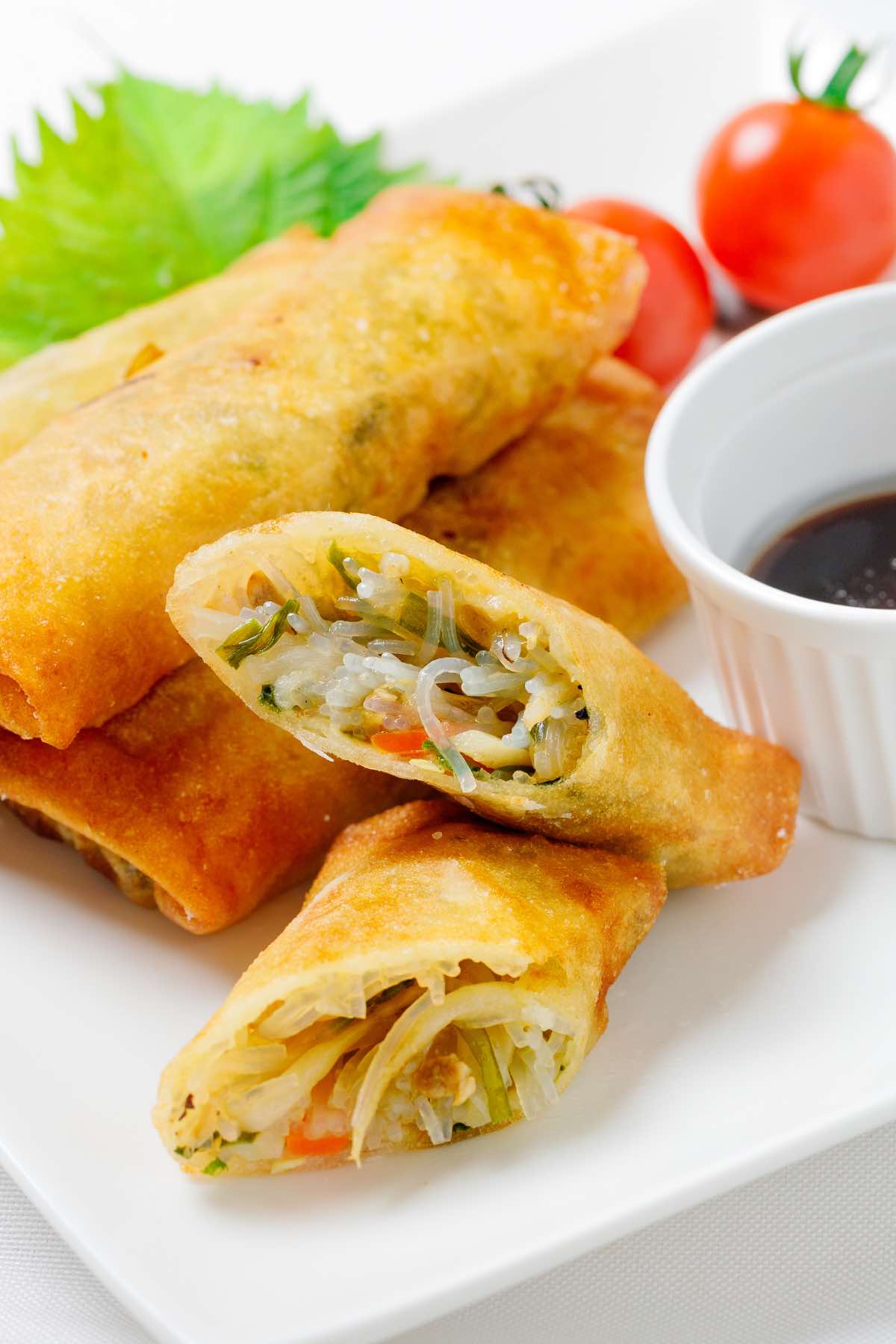
Golden brown and full of flavor, these appetizers signal good things to come for your multi-course meal. Traditionally served in Japanese restaurants, you can recreate Harumaki at home for a special dinner. Pair them with a dipping sauce for a tasty snack you can’t get enough of.
What is Harumaki?
Every Asian culture has its own variation of spring rolls. In Japan, they are known as “harumaki” (春巻き) – a combination of the words haru (spring) and maki (roll). These rolls are made by filling spring roll wrappers with meat, mushrooms and other ingredients. The rolls are then fried until they’re crispy and golden brown.
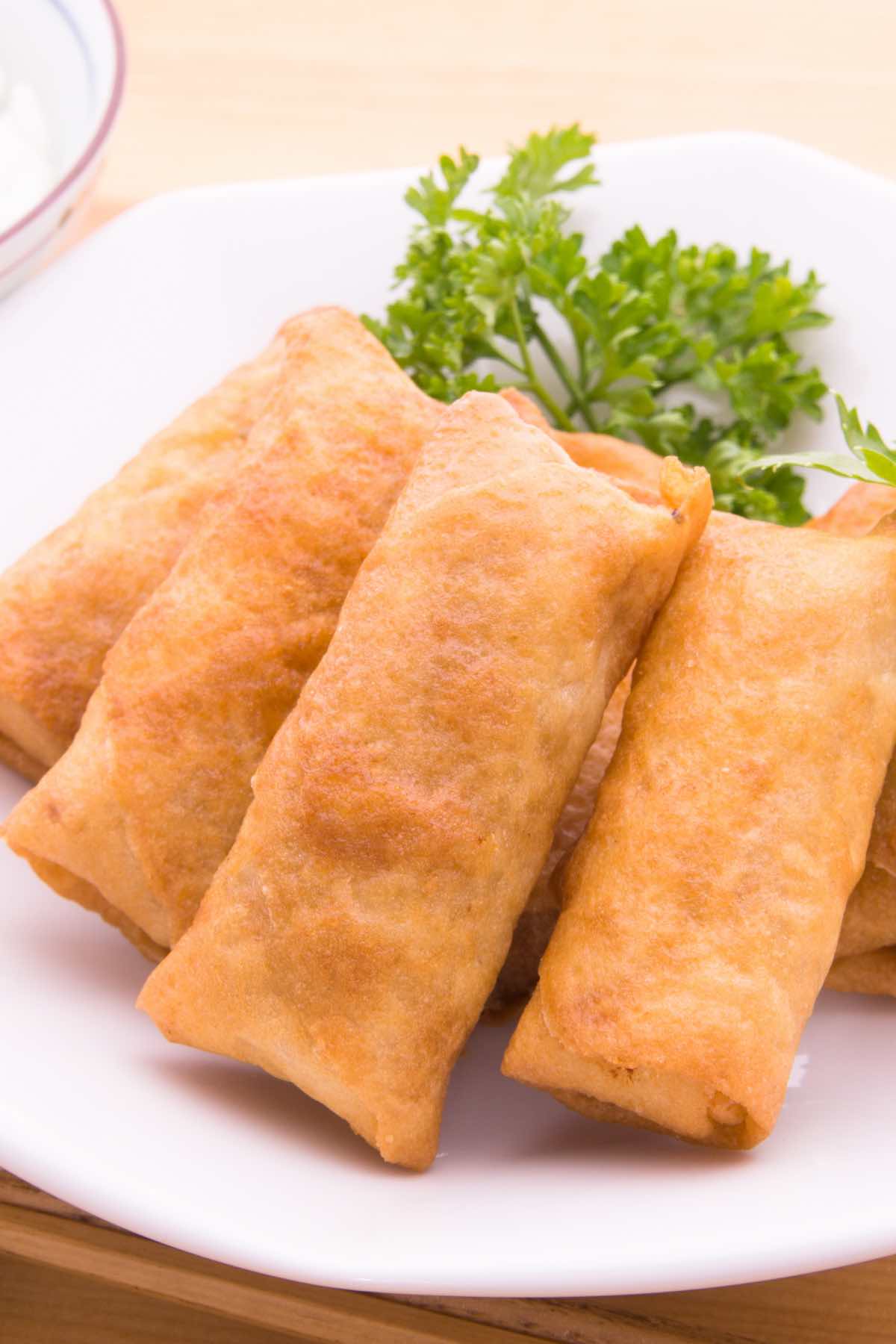
Harumaki Ingredients
- Spring Roll Wrappers: We recommend using 8-inch square spring roll wrappers. Note that they’re different than egg rolls.
- Dried Shiitake Mushrooms – Known for their strong, earthy flavor, shiitake mushrooms are a key ingredient in harumaki. You can find them in most Asian grocery stores or order online from Amazon.
- Garlic – Adds tons of flavor to your spring rolls.
- Meat – Feel free to use your choice of ground pork, minced/shredded chicken or minced shrimp.
- Glass Noodles – Also known as cellophane noodles, vermicelli, or bean thread noodles, this ingredient can be found in the Asian cuisine aisle of most supermarkets.
- Sesame Oil – It adds an authentic nutty flavor to the dish. Vegetable oil is a good substitute.
- Vegetables – Include carrots, cabbage, and green onions.
- Oyster Sauce –This rich, syrupy sauce has a sweet, salty taste. Find it in the Asian cuisine aisle.
- Soy sauce – This umami sauce is a staple in Asian cuisine.
- Cornstarch & Water – To seal the spring rolls.
- Vegetable Oil – For deep frying due to its high smoke point.
How to Make Harumaki Spring Rolls
Step 1: Make the Filling
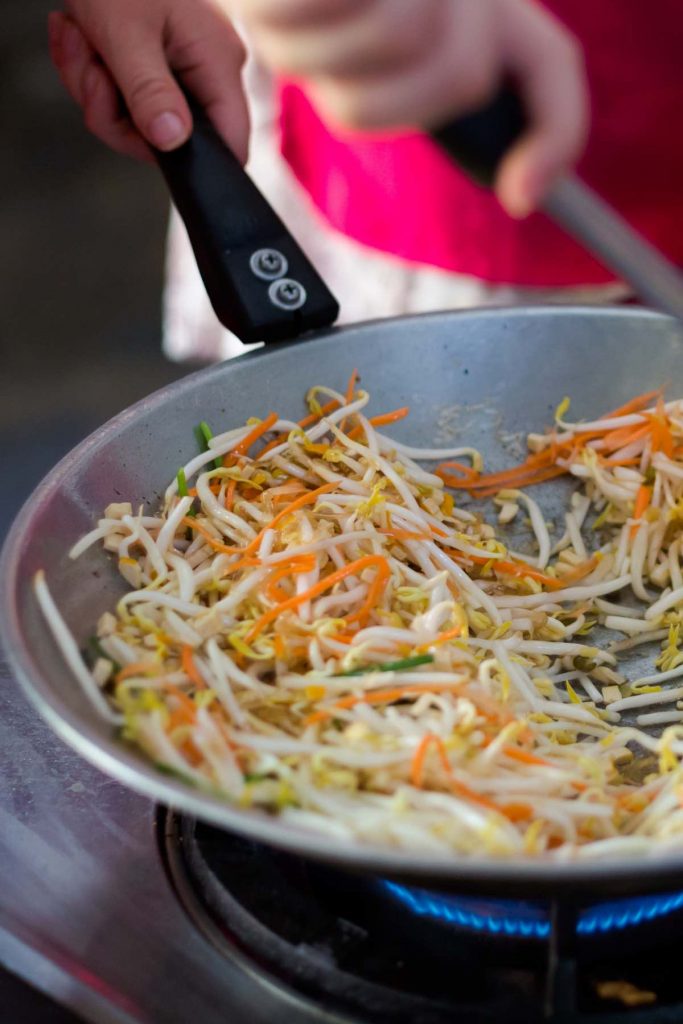
- Prepare the ingredients: Soak dried shitake mushrooms in boiled water for 20 minutes. Then chop the mushrooms, shred carrots, cut green onions, and cabbage. Also soak the glass noodles in boiling water for 2-3 minutes or until al dente. Drain well and cut into 1-inch pieces.
- Cook the Filling: Heat sesame oil in a skillet over medium-high heat. Add garlic, stir-frying for about 1 minute until fragrant. Add pork, and stir fry until it’s no longer pink. Then add the veggies, and cook for about 3 minutes or until vegetables are wilted.
- Season the Filling: Add cornstarch, soy sauce and oyster sauce. Cook for 1 minute or until the mixture is no longer watery. Remove from heat, and transfer the filling onto a plate or tray to let it cool.
Step 2: Assemble Harumaki Spring Rolls
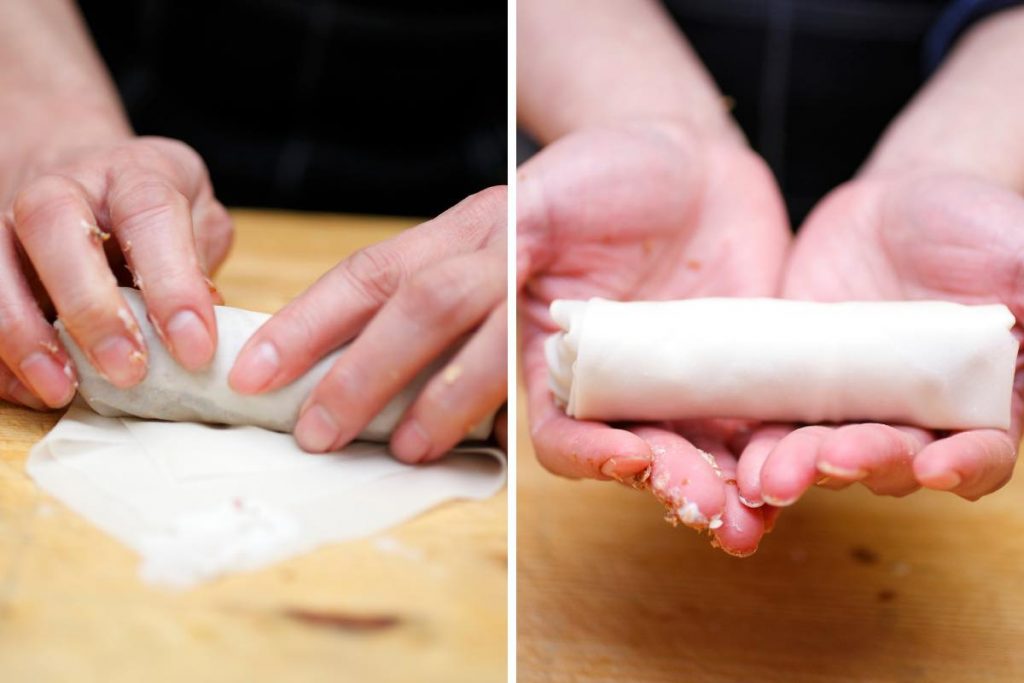
- Place a wrapper on a flat surface in a diamond position. Spoon about 2 tablespoons of filling onto the bottom of the wrapper. Roll up halfway, and then fold sides. Then keep rolling towards the end.
- Use cornstarch slurry to seal the spring roll.
Step 3: Deep-Fry the Spring Rolls

- Heat the vegetable oil in a large saucepan or Dutch oven over medium-high heat to 350°F. Carefully lower spring rolls in the oil and cook them in batches.
- Turn occasionally and cook for about 2 minutes until they become nice and golden. Transfer to a paper towel-lined plate. Repeat with the remaining spring rolls. Serve hot with soy sauce, or sweet and sour sauce.

Tips for the Best Harumaki Recipe
- Be sure to use spring roll wrappers instead of traditional egg roll wrappers or rice paper.
- Avoid overfilling the rolls. Two tablespoons of filling are the right amount to prevent the spring rolls from breaking apart.
- After you’re done filling the rolls, you can put them in the freezer in single layers briefly before frying. This helps to ensure that they won’t stick together while being fried.
Harumaki Dipping Sauce
These spring rolls are delicious when served with sweet and sour sauce or soy sauce. Dip your spring rolls into these tasty sauces for even more flavor.
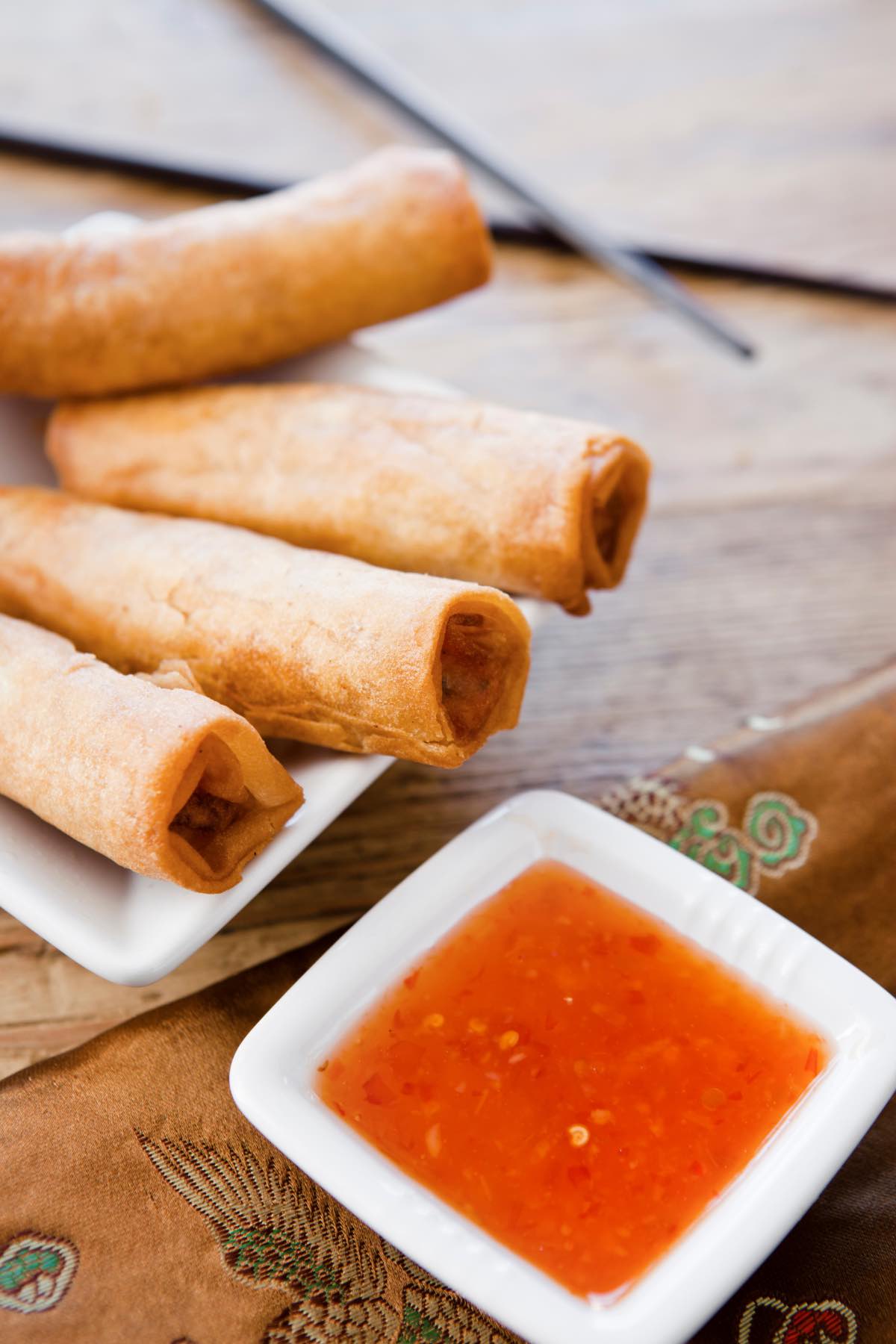
What is a Spring Roll Wrapper Made of?
Spring roll wrappers are traditionally made with just three simple ingredients – salt, flour and water. Usually, rice flour is used due to its subtle, delicate flavor.
Are Harumaki Spring Rolls Japanese or Chinese?
Harumaki spring rolls are Japanese. The name itself is a direct translation of the Japanese words haru (spring) and maki (roll). They are considered by many people to be the Japanese adaptation of Chinese spring rolls.
Spring Roll vs Egg Roll
Egg rolls are a Chinese-American creation that is not traditionally consumed in China. Egg rolls are made with very thick, crunchy wrappers, resulting in deep-fried, bubbly skin. Spring rolls are made with thin, delicate wrappers and are a lot less crunchy.
If You Like This Recipe Try These Out
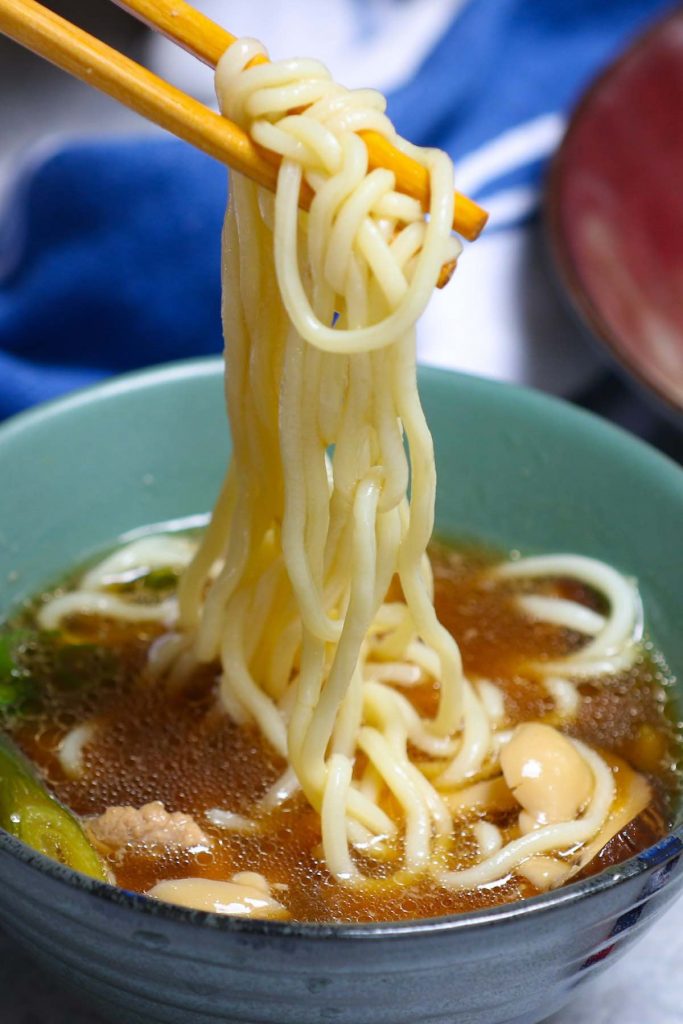
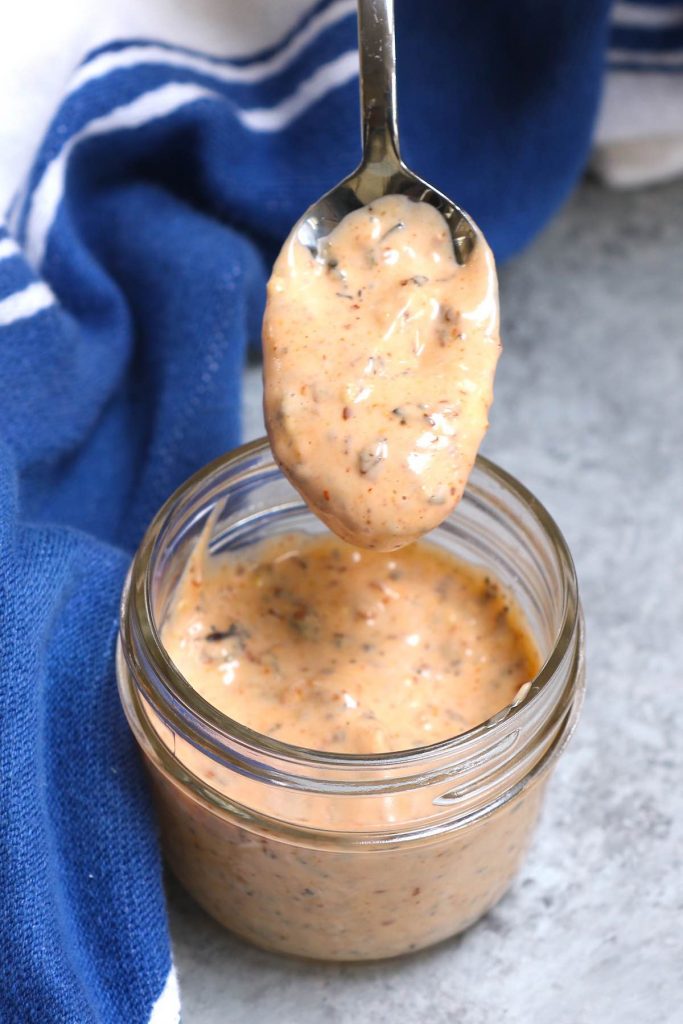
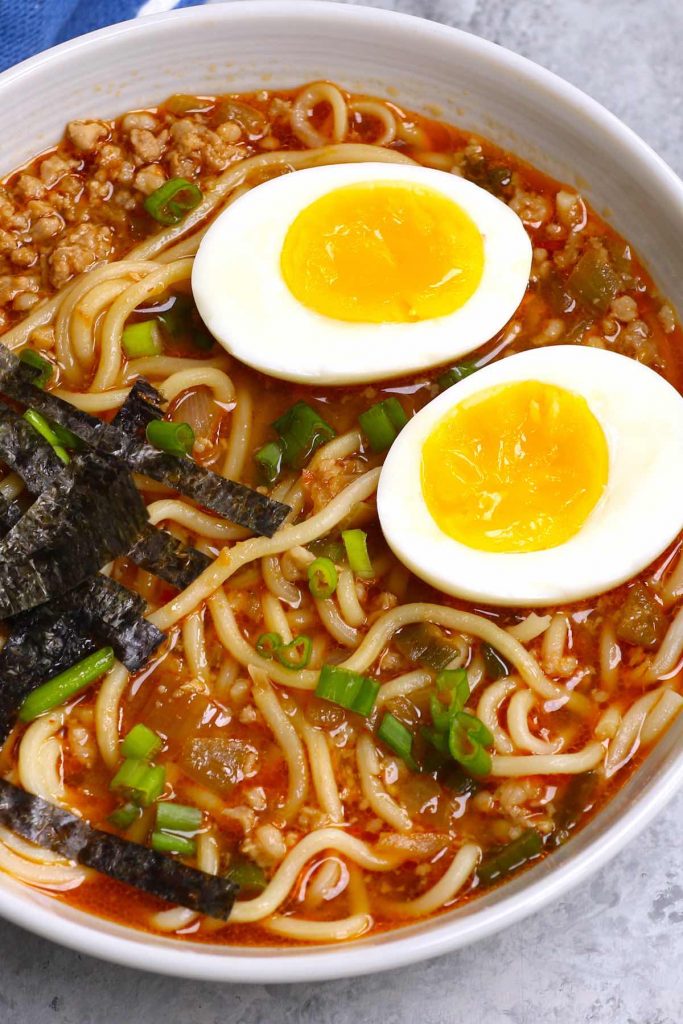
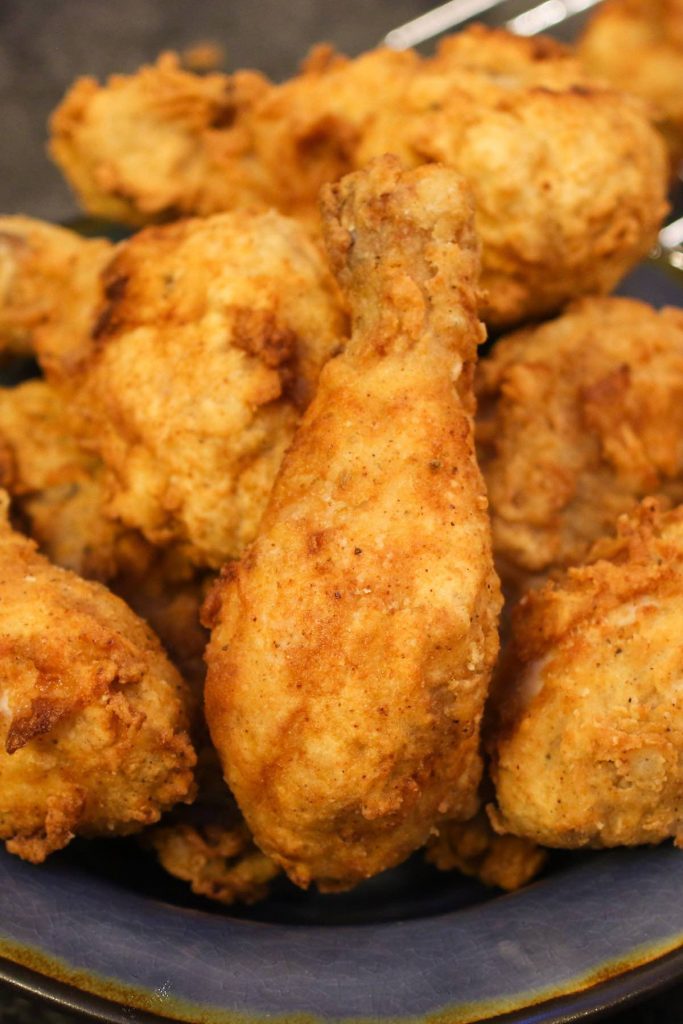
If you tried this recipe, let me know how your Harumaki Spring Rolls turn out in the comments below!
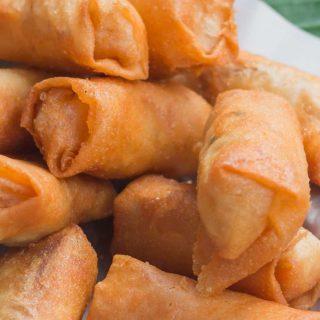
Harumaki Recipe
Ingredients
Filling:
- 1/2 lb ground pork, (or chicken, or minced shrimp)
- 2 garlic cloves, (minced)
- 4 dried shiitake mushrooms
- 1 oz glass noodles
- 1 tablespoon sesame oil, (or vegetable oil)
- 1 ½ cups bean sprouts
- 1 ½ cups shredded carrots
- 1 cup shredded cabbage
- 1 green onion, (chopped)
- 1 teaspoon cornstarch
- 1 ½ tablespoons oyster sauce
- 2 teaspoons soy sauce
Harumaki Spring Rolls:
- 12-15 spring roll wrappers, 8-inch squares
- 2 teaspoons cornstarch, plus 1 tablespoon of water for sealing rolls
- vegetable oil for frying
For Serving (optional):
- soy sauce
- sweet and sour sauce
Instructions
For the Filling:
- Soak the dried shitake mushrooms in plenty of boiled water for 20 minutes. Make sure to drain and squeeze excess water out of the mushrooms. Chop the mushrooms, and set aside.
- Soak the glass noodles in boiling water for 2-3 minutes or until al dente. Drain well and cut into 1-inch pieces.
- Heat sesame oil in a skillet over medium high heat. Add garlic, stir-frying for about 1 minute until fragrant. Add pork, and stir fry until it’s no longer pink.
- Add mushroom, glass noodles, bean sprouts, shredded carrots, green onion and cabbage. Cook for about 3 minutes or until vegetables are wilted.
- Add cornstarch, soy sauce and oyster sauce. Cook for 1 minutes or until the mixture is no longer watery. (It should be sticky.)
- Remove from heat, and transfer the filling onto a plate or tray to let it cool.
Make Harumaki Spring Rolls:
- Mix together cornstarch and water in a small bowl.
- Then place a wrapper on a flat surface in a diamond position.
- Spoon about 2 tablespoons of filling onto the bottom of the wrapper. Roll up halfway, and then fold sides. Then keep rolling towards the end.
- Use cornstarch slurry to seal the spring roll.
- Heat the vegetable oil in a large sauce pan over medium-high heat to 350°F.
- Carefully lower spring rolls in the oil and cook in batches (about 5 spring rolls at a time.)
- Turn occasionally and cook for about 2 minutes until they become nice and golden.
- Transfer to a paper towel lined plate.
- Repeat with the remaining spring rolls. Serve hot with soy sauce, or sweet and sour sauce.
Notes
- Use spring roll wrappers instead of traditional egg roll wrappers. Don’t use rice paper either.
- Avoid overfilling the rolls. We use 2 tablespoons of filling to each spring roll, and this is the right amount to prevent the spring rolls from breaking.
- To avoid the rolls from sticking together, we recommend freezing the filled rolls in a single layer before deep-frying.
Nutrition
Nutrition information provided is an estimate only and will vary based on ingredient brands and cooking methods used.
